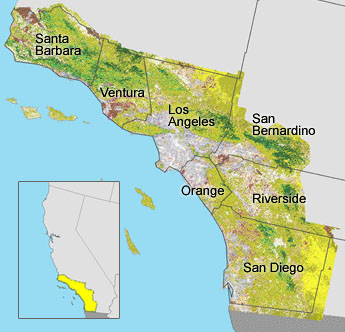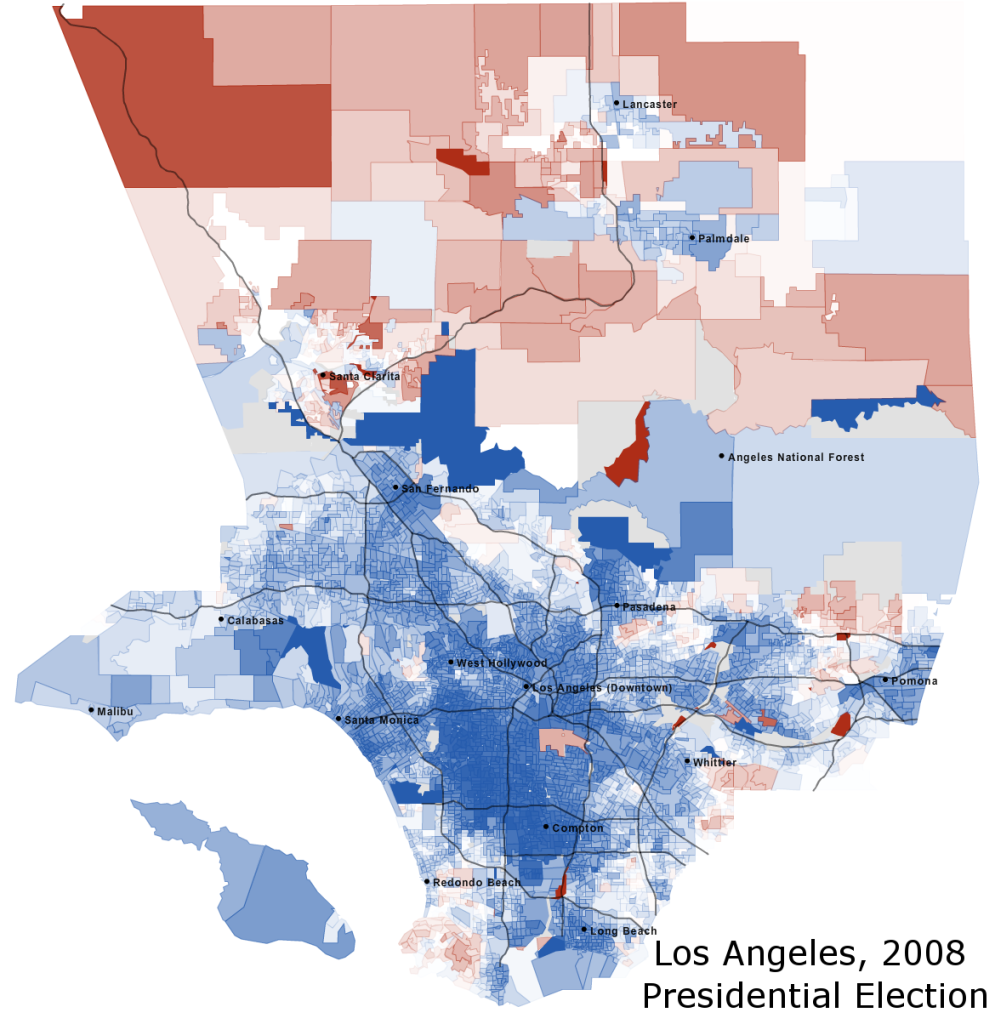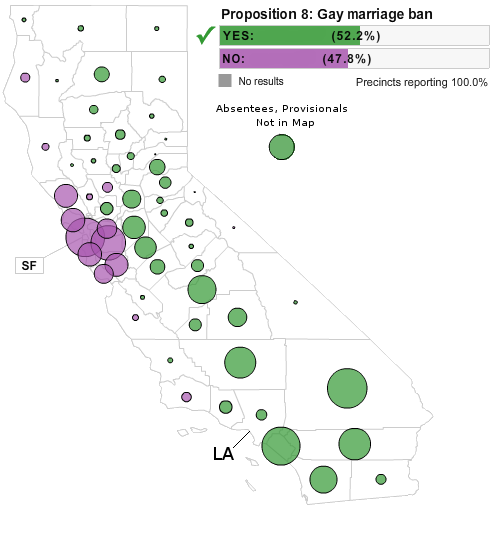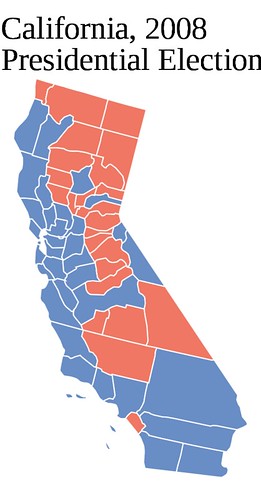I’m not optimistic that Jack Conway will win in this environment, but he’s still in the game and so long as Rand Paul is his opponent, it’s a safe bet that he’ll remain in the game. But Kentucky has become a brutally difficult state for a Democrat to win, and in the last three competitive Senate elections, they always came up short. I haven’t encountered a detailed handicap of the current race so I thought I’d offer my own outsider observations and a request for some answers to region-specific inquiries.
The best baseline map I’ve encountered for a competitive statewide election in Kentucky was the 2004 Senate race between Dan Mongiardo and Jim Bunning. The map looked like it would be a winning one for Mongiardo, who scored victories in 47 counties, piecing together impressively large margins in Jefferson County (Louisville) and Fayette County (Lexington), overperforming in east Kentucky coal country which was Mongiardo’s stomping grounds, and even winning a dozen or so conservative Democratic counties in Kentucky’s far west side, which has been trending hard against the Democrats since the Clinton years.
But Mongiardo’s map was missing one key element. Jim Bunning scored solid numbers in KY-04, the district where he used to serve in the House, and where his margins in suburban Cincinnati and the northeastern coal counties near Ashland were insufficient to help Mongiardo pull off the necessary upset. It seems less likely that either Conway or Paul will have any significant hometown turf wars the way both Mongiardo and Bunning did, so those advantages and disadvantaged should be neutralized this year.
But the big question for me is….what does a winning Kentucky Senate map for Jack Conway look like?
My suspicion is the core of his support will come from Louisville and Lexington. Mongiardo won these cities’ home counties by between 17 and 20 points in 2004, and if Conway is to make this race competitive, it seems like he would have to perform at least as well there as Mongiardo did….and probably quite a bit better as I suspect Paul will do better than Bunning in rural Kentucky.
Speaking of rural Kentucky, I’m gonna be glued to my computer on Nov. 2 watching the early returns roll in from east Kentucky. This contest should be a perfect bellwether to determine if the region’s deeply Democratic past is gone forever, or simply stunted by their personal animus towards Obama. I’m nervous that at least in the Obama era, the region could be major trouble. There were two counties in the entire nation that voted for John Kerry by more than 60% in 2004 and then went for McCain in 2008. Floyd and Knott Counties in eastern Kentucky were the counties. Now I’m pretty confident that Conway will win in most of the counties in eastern Kentucky, but will they be soft victories or landslides?
It’s a very open question. Will hostility to cap and trade guide coal country’s vote in favor of Rand Paul? Will Paul’s calls to deregulate anything and everything to coal safety work to Conway’s benefit? Or will these opposing factors ultimately be a wash? Considering that east Kentucky’s returns are generally among the first to roll in, we should know early in the evening if Conway’s numbers in east Kentucky are gonna be sufficient enough for him to pull out a statewide victory.
Western Kentucky is gonna be a tough nut to crack. Much like southern Illinois, the region was strong for Democrats in the Clinton era but has moved ferociously to the right ever since, so far that scandal-plagued Ernie Fletcher managed to win McCracken County (Paducah) in 2007. This is from a county that was within a half-percentage point for going for Walter Mondale in 1984. While Paducah itself is probably out of reach, there are probably some rural counties in the area that are winnable for Conway to help him even out the score a bit in that part of the state. If Conway isn’t doing some business in western Kentucky, it’s hard to imagine he’ll win statewide.
Beyond that, there’s a semi-competitive area in north-central Kentucky in between Louisville and Lexington where Conway’s gonna have to score some wins to offset the 3-1 defeats he’ll almost certainly get in the southern tiers of Kentucky counties.
Now…question time. What’s the media market situation on the outskirts of Kentucky and does either Paul or Conway have a presence there? I’m guessing that northeastern Kentucky is in the Cincinnati and Huntington, WV, media markets. Am I correct in assuming that in 2004, Mongiardo’s underperformance in that region had anything to do with a reduced or nonexistent presence in their media markets? And what other media markets filter into Kentucky’s edges? Cape Girardeau, MO? Memphis, TN? Nashville? Evansville, IN? Knoxville? And are either Paul or Conway on the air there? If neither are, I could easily see a benefit for the candidate who ultimately does choose to make an ad buy in the outlying media market. If voters in Ashland, KY and the Democratic coal counties surrounding it see only Jack Conway ads on TV, they’re far more likely to vote for him than his stealth opponent.
And lastly, I’m sure all of us here are glad that Jack Conway beat Dan Mongiardo in the primary, but from a tactical perspective, would be better off with Dr. Dan given that he’d most likely be able to mine (no pun intended) massively higher margins out of his home base in and around Hazard, an area that based on recent trendlines is likely to go against the Democrat dramatically without Mongiardo on the ballot? Or will Conway’s advantages in other regions of the state outweigh Dr. Dan’s in southeastern Kentucky?
I always get most excited over competitive races in Republican-leaning states where a Democrat needs to piece together a difficult coalition to eke out a victory. This certainly qualifies, and I’m eager to hear from anybody who has some perspective on what we might expect to see here.




